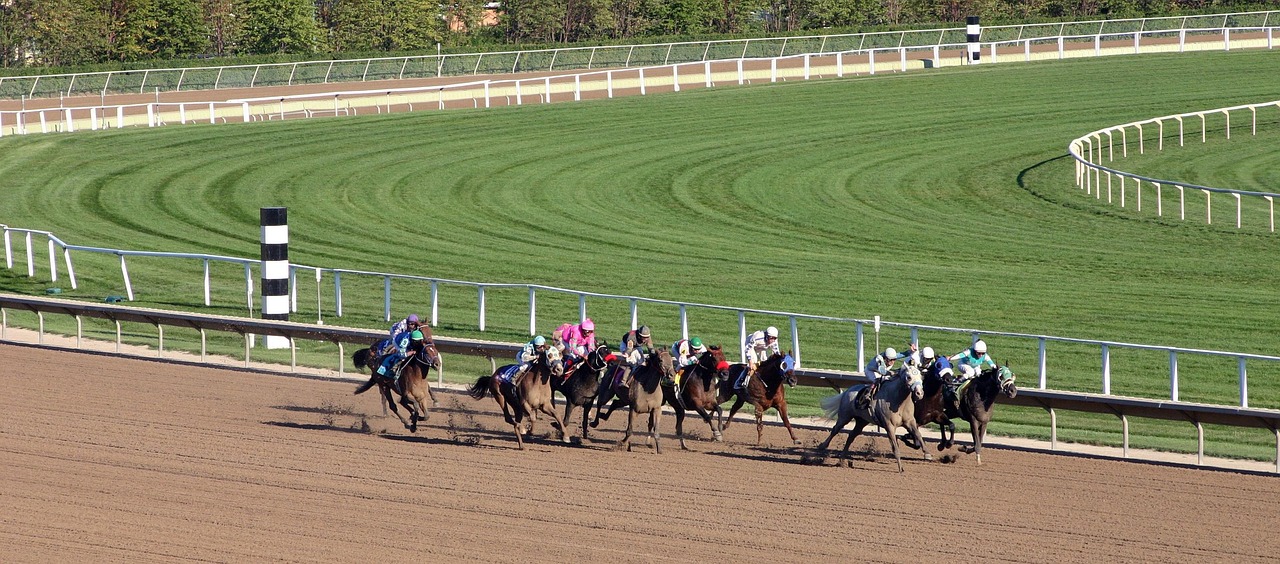If you’ve looked at a horse racing data file, you may have noticed that distances are measured in furlongs. But, what exactly is a furlong, and why does it matter? Knowing this term can help you better understand how long a race actually is and what types of horses are likely to perform well. Understanding furlongs might seem like a small detail, but it’s an essential part of the sport for anyone looking to follow or analyze horse racing.
What is a Furlong?
A furlong is a unit of distance that comes from Old English-style measurements. The term actually means “furrow long”, which references the length of a furrow in a plowed field! One furlong is equivalent to 1/8 of a mile, 220 yards, or 201 meters. So, this means that you would need 8 furlongs to make a mile! Even though this is a very outdated term and is not often used outside of horse racing, it’s stuck around in the sport because it fits race distances well and has become part of tradition.
How Long is a Furlong in Horse Racing?
- 1 furlong = 1/8 mile
- 6 furlongs = 3/4 mile
- 8 furlongs = 1 mile
- 10 furlongs = 1.25 miles
- 12 furlongs = 1.5 miles
Why does Horse Racing Use Furlongs?
Horse racing has been around for a long time, and some of the terms have stayed the same since the sport’s early days. Furlongs are used because they allow the sport to break down long distances into easier-to-read pieces. So, instead of horse races depicting the lengths as parts of a mile, they can simply use one number. This has become more natural and easier for fans and those working in the profession to work with and analyze.
Common Race Distances in Furlongs
A horse race can vary a lot in length depending on the type of race, but using furlongs can make it much easier to compare them. Short races, called sprints, are usually 5 to 7 furlongs in length. These races favor horses with early speed and the ability to quickly accelerate. Middle-distance routes are usually around 8 furlongs in length. Extended routes are often 10 or more furlongs, which require a higher amount of stamina and endurance from the horses.
Top U.S horse races and their length:
- Kentucky Derby – 10 furlongs (1.25 miles)
- Preakness – 9.5 furlongs (1 3/16 miles)
- Belmont Stakes – 12 furlongs (1.5 miles)
- Breeders’ Cup Classic -10 furlongs (1.25 miles)
- Breeders’ Cup Sprint – 6 furlongs (¾ mile)
Furlongs and Race Analysis
Understanding furlongs isn’t just about knowing the distance of a race, it also plays a role in predicting how a horse might perform. Furlongs help reveal which horses are likely to do better at certain distances. Some horses are sprinters with early speed that do best at short races, like 5 or 6 furlongs. Other horses might rely on their stamina and endurance and perform better in longer races where pacing and consistency are more important. By paying attention to race distances, you can compare a horse’s past performance and spot patterns, such as whether the horse tends to fade late or finish strong.
Furlongs also play a big role in analyzing the pacing of a race. Sprints are usually fast from beginning to end, whereas longer distance races tend to unfold more evenly. In horse racing data, sectional times will tell you how quickly the horse covered each part of the race. These sectional times are often compared against par figures, which represent the expected times for that section of the race under similar conditions. Understanding how a horse performs relative to par figures can tell you if they broke quickly, maintained pace, or closed strong. This information gives you valuable insight into a horse’s running style and their suitability for different types of races.


